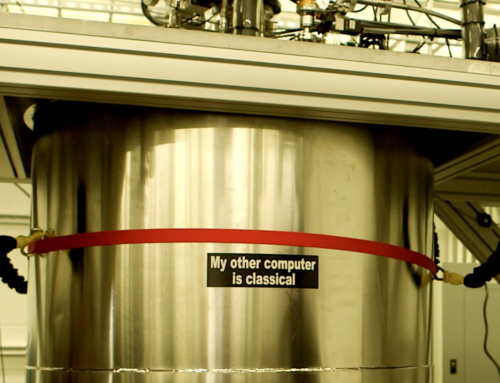Feature image via Science X.
Gabriella Skoff
Schrödinger’s cat is a thought experiment that has become well known as a symbol for the “weirdness” and unpredictability of the phenomenon of quantum superposition. The eponymous thought experiment devised by Austrian physicist Erwin Schrödinger in 1935 involves a cat, a vial of poison, a radioactive substance and a sealed box. The experiment dictates that if an atom of the radioactive substance decays then it will trigger the release of the poison, killing the cat; however, that may or may not happen. One can only find out if this has occurred, and therefore if the cat is alive or dead, by opening the box to observe the state of being of the cat. According to the Copenhagen Interpretation of quantum physics, until the observer peeks inside the box, the cat is actually both dead and alive. It is only when the state of the cat is observed, therefore, that the quantum superposition collapses into one or the other states and the cat is found to be either dead or alive.
Based on Niels Bohr’s 1913 proposal of quantum jumps, it was thought that the process of the cat collapsing into a theoretically dead or alive state upon observation was both instantaneous and unpredictable. However, new experimental research performed by a team of Yale researchers and published last week in Nature journal, suggests otherwise. Dr Zlatko Minev and his team’s findings conclude that a quantum jump does not actually exhibit the random, abruptness that defines the fate of Schrödinger’s cat. Rather, their research suggests, “the evolution of each [quantum] jump is continuous, coherent and deterministic”.
Within the context of Schrödinger’s cat paradox, these findings imply that the continued-life/death of the cat is simply the final stage of a process rather than an instant occurrence without foreshadowing. Further, the Yale team has detected “an advance warning signal” which indicates that a jump is about to occur. This seems to signify that we can not only detect when a quantum jump will occur but that we can also potentially reverse it during the transition. These new findings not only impact our theoretical ability to potentially save Schrödinger’s cat from its proverbial death but also have a fundamental impact in applied quantum computing.
The conundrum of a quantum jump has long presented a challenge in the applied field of quantum computing, where a jump in qubits manifest as an error in calculations. Researchers are hopeful that these new findings could potentially facilitate major advances in understanding and controlling quantum information. They anticipate that this new discovery will help to develop an early warning system that can predict when a jump, and therefore a computational error, is about to occur in order to catch it before it happens and reverse its course. While it would be a wonderful conclusion that Schrödinger’s dear cat could be saved, the real value of this research lies in its applied context: the potential to develop an advanced monitoring, detection and correction function for quantum systems, which could help bring us one step closer to a quantum advantage.







Leave a Reply